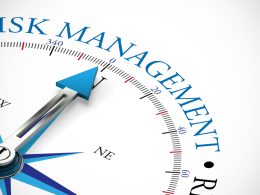How to Keep Your Income Afloat as the ECB Tapers - Context
by Jørgen Kjærsgaard, Head—European Corporate Credit, AllianceBernstein
The ECB has begun its big retreat from bond buying. It’s deftly managed to avert a taper tantrum in regional bond markets, which suggests they’ll stay an attractive place for income-seeking investors to drop anchor.
In the couple of years it’s been in place, the European Central Bank (ECB)’s bond buying program has touched most corners of the region’s bond markets. It’s resulted in low to negative yields in the safest bonds, compressed spreads across the euro-area’s different government bond markets, tighter credit spreads and a general flattening of regional yield curves.
As it’s grown clearer that the ECB was gearing up to phase out quantitative easing (QE), there were concerns that tapering might trigger an unruly reversal of QE-driven dynamics.
Now that the ECB has unveiled its tapering plans, their very slow and gradual pace—and the fact that they don’t have a definitive end-date—are buoying up bond markets.
As market dynamics shift, some bonds will fare better than others. We think income-seeking investors can stay comfortably afloat—provided they can actively navigate credit sectors and ratings.
What’s Keeping Credit Afloat?
The QE program and negative interest rates encouraged investors to move their money out of the region’s safest government bonds and into higher-yielding assets. This has ensured that demand for regional credit has comfortably outstripped the available supply. This important technical support will stay in place as QE tapers. And, with the ECB signalling that interest rates won’t rise any time soon, cash will remain an unattractive investment.
It’s also important to recognize that the ECB is tapering because of the big improvement in the region’s economic outlook. As a whole, Europe’s corporate borrowers are in good shape and aren’t overloaded with debt. Better economic conditions should help more businesses thrive, ensuring they have ample buffers to withstand modestly higher borrowing costs in a post-QE world. This should help keep default rates low.
Where’s Credit Most Compelling?
QE buying certainly means some regional credit is looking pricier. But we think there are still untapped pockets of value—like high-yield bonds issued by select European capital goods companies. They offer attractive yields, while the underlying businesses are poised to benefit from Europe’s better growth momentum as well as from these companies’ leading market shares and ability to generate free cash flow through the cycle.
At the same time, some regional corporate bonds look poised to rally as QE is scaled back. Bonds issued by the region’s banks, for example, were excluded from the QE program and missed out on a QE-driven boost.
Banks are particularly sensitive to the shape of the yield curve because they borrow short term and lend over the longer term. A gently steepening curve will likely bolster their profit margins—while their lending volumes should rise as Europe’s economy rebounds. We see most value in the more subordinated securities issued by Europe’s most recapitalized banks.
Bond markets may not stay becalmed as the ECB starts to phase out QE buying. But that’s no reason for income-seeking investors to jump ship. There are plenty of places to drop anchor for those who can navigate astutely.
The views expressed herein do not constitute research, investment advice or trade recommendations and do not necessarily represent the views of all AB portfolio-management teams. AllianceBernstein Limited is authorised and regulated by the Financial Conduct Authority in the United Kingdom.
Copyright © AllianceBernstein














